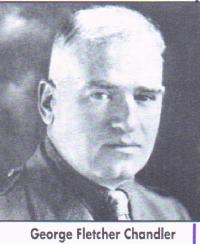CULTURE, ETHOS, AND SYMBOLS:
A NEW TRADITION
| HOME | . |
 Chapter 17 of the Patten Report tackles the issue of Culture, Ethos and Symbols. This has
become the subject of considerable debate and disagreement. What is the name of the new police service to be?
What color will be its uniform? What will be its design? What emblems and insignia will officers wear and carry?
What flags and banners will fly from the facilities of the service? Chapter 17 of the Patten Report tackles the issue of Culture, Ethos and Symbols. This has
become the subject of considerable debate and disagreement. What is the name of the new police service to be?
What color will be its uniform? What will be its design? What emblems and insignia will officers wear and carry?
What flags and banners will fly from the facilities of the service? We have a lot of faith that everyone will come to agree on these outward signs of the culture,
professionalism and impartiality of the police service. Symbols are powerful things but nothing says that they do not
have lives of their own. With a little imagination, even very old symbols can acquire fresh, new meanings. We have a lot of faith that everyone will come to agree on these outward signs of the culture,
professionalism and impartiality of the police service. Symbols are powerful things but nothing says that they do not
have lives of their own. With a little imagination, even very old symbols can acquire fresh, new meanings. Mr. Tom Constantine comes to Northern Ireland with his own experience of the value of symbols.
In our letter to Chief Constable Sir Ronnie Flanagan, we told of the significance of the New York State Trooper's uniform
that Mr. Constantine so proudly wore for so many years. Even that symbol's meaning grows and changes over time. Mr. Tom Constantine comes to Northern Ireland with his own experience of the value of symbols.
In our letter to Chief Constable Sir Ronnie Flanagan, we told of the significance of the New York State Trooper's uniform
that Mr. Constantine so proudly wore for so many years. Even that symbol's meaning grows and changes over time.
 Way back in 1917, Colonel George Fletcher Chandler, the first New York State Police
Superintendent, designed the Troopers' uniform -- one of the most distinctive and symbolically meaningful in the
world. The Colonel also wrote a book called The Policeman's Art which was a guide for the Troopers
on their duties and responsibilities. That book is still read and cherished by our Troopers. Way back in 1917, Colonel George Fletcher Chandler, the first New York State Police
Superintendent, designed the Troopers' uniform -- one of the most distinctive and symbolically meaningful in the
world. The Colonel also wrote a book called The Policeman's Art which was a guide for the Troopers
on their duties and responsibilities. That book is still read and cherished by our Troopers. The uniform's gray cloth is woven of equal parts black and white fibers. Black and white are
universal symbols of evil and good. The reason for that is that all over the world, people have always felt safer during
the day in the sunlight. When the sun goes down and the world turns dark, they are more exposed to danger of every
description. Today, however, people are sensitive to the fact that people with dark skin who have endured
discrimination through our history might feel offended if the color black is associated with evil. The uniform's gray cloth is woven of equal parts black and white fibers. Black and white are
universal symbols of evil and good. The reason for that is that all over the world, people have always felt safer during
the day in the sunlight. When the sun goes down and the world turns dark, they are more exposed to danger of every
description. Today, however, people are sensitive to the fact that people with dark skin who have endured
discrimination through our history might feel offended if the color black is associated with evil. This poem reminds people of another context in which the mingling of black and white stands
for something very positive indeed. It also calls attention to the efforts of police agencies all over America to recruit
and welcome men and women of all races, nationalities and religions to join in enforcing our laws and strengthening
our communities. This poem reminds people of another context in which the mingling of black and white stands
for something very positive indeed. It also calls attention to the efforts of police agencies all over America to recruit
and welcome men and women of all races, nationalities and religions to join in enforcing our laws and strengthening
our communities.A NEW TRADITION Colonel Chandler at the start Did author The Policeman's Art. The things that he wrote down inside Would be the new-fledged Troopers' guide. To their appearance, he gave long thought. At last, this inspiration got: "I see them on Inspection Day All clad in cloth of sober gray, Of fibers woven dark and light In equal parts, the black and white Suggesting by a small illusion That fast in all the world's confusion They'd stand between, the Troopers would, The black of evil and white of good." The Troopers whom we see today Are still in uniforms of gray. But changing times update tradition. The Policeperson's Art's in new edition. The black and white that to our eyes Is gray, today does symbolize, Not good 'gainst evil, but something new. You'll hear it if you listen to The song these words are taken from: "Black and White together, we shall overcome." Poem by Terry O'Neill Copyright 2000 by Constantine's Circus, Inc. 
 Questions? E-mail Us! CONSTANTINE'S CIRCUS, INC. PO Box 7223 Capitol Station Albany, NY 12224-0223 518-465-4413 518-465-3200 FAX |